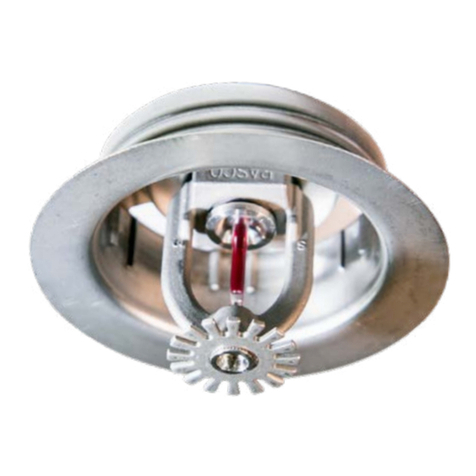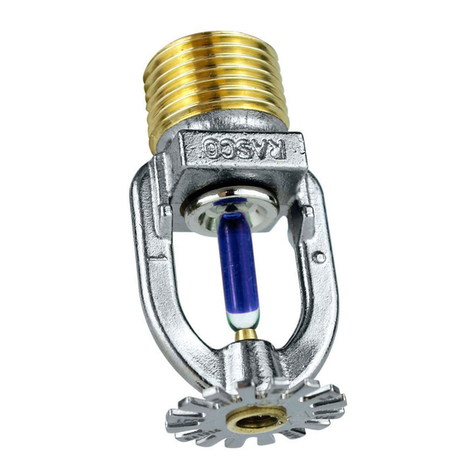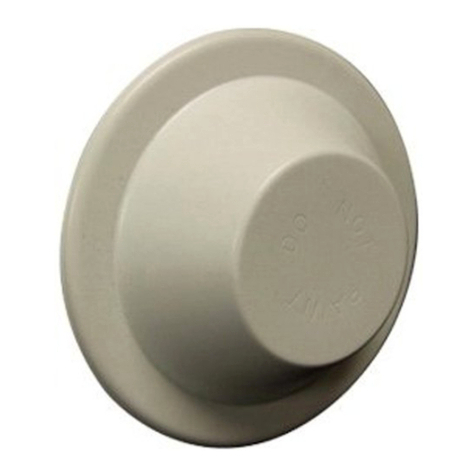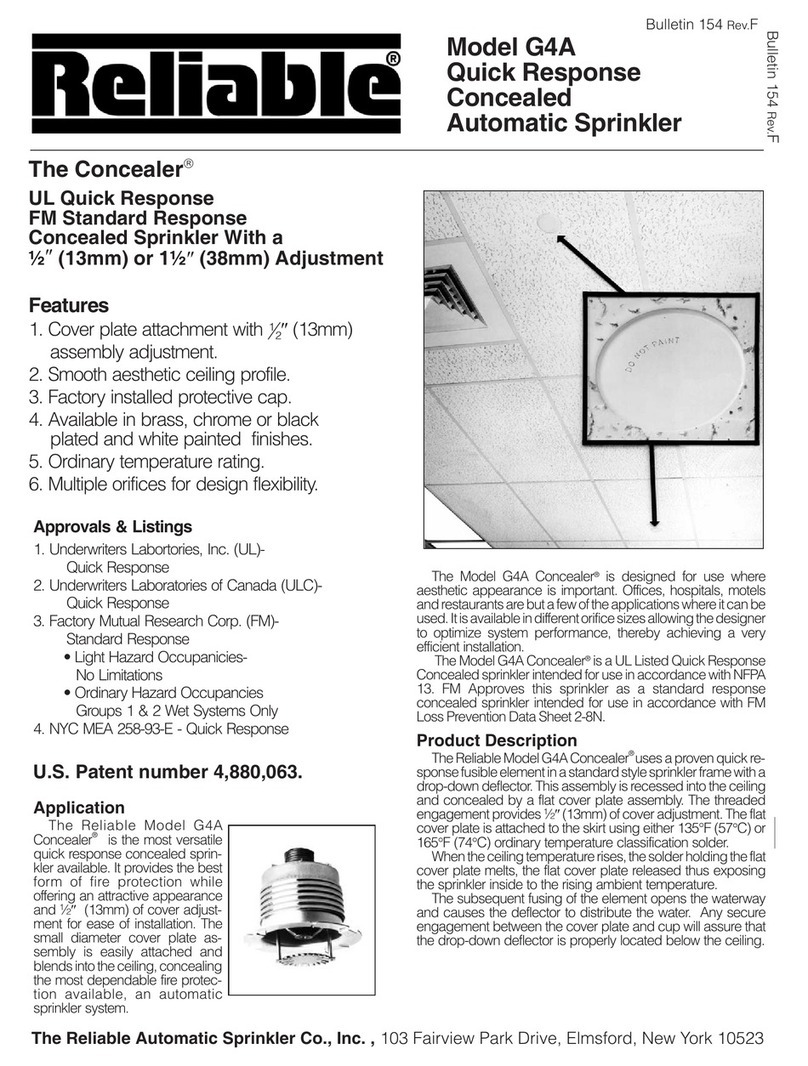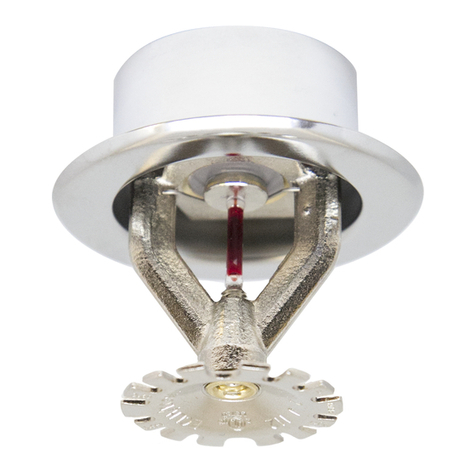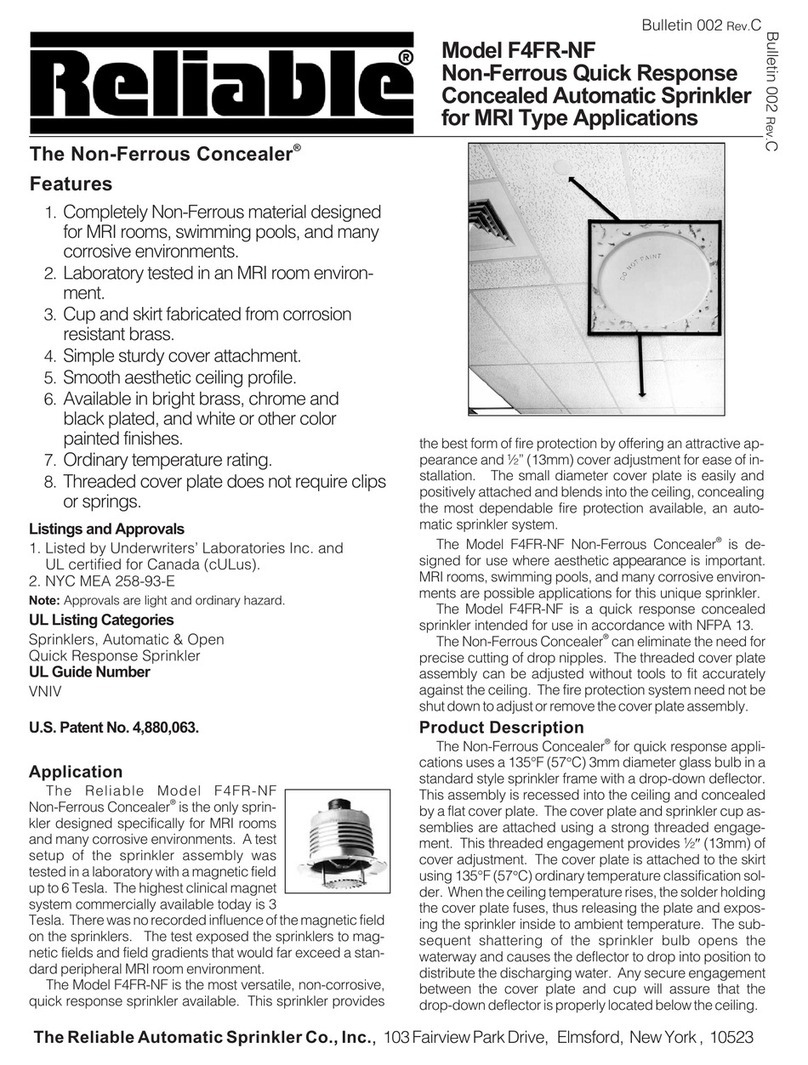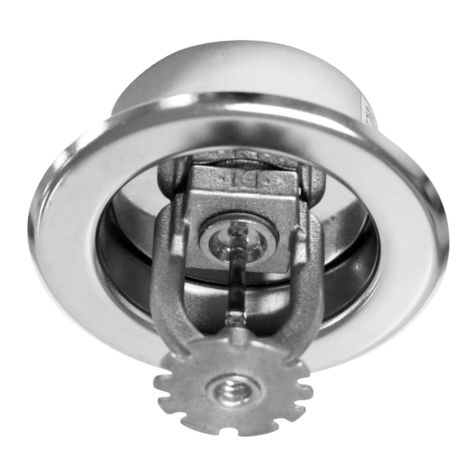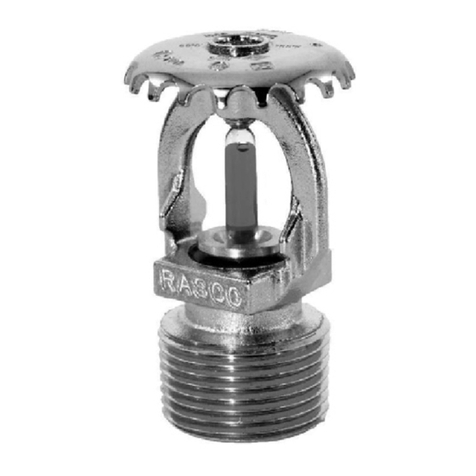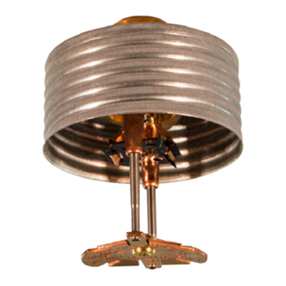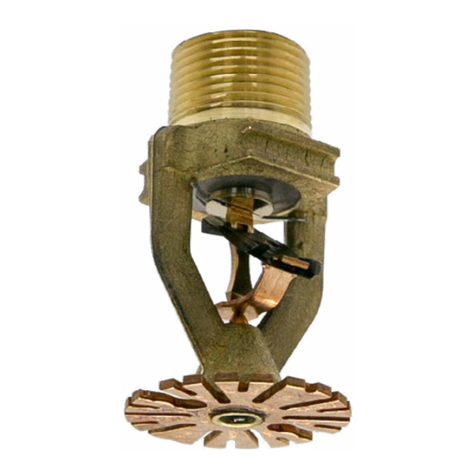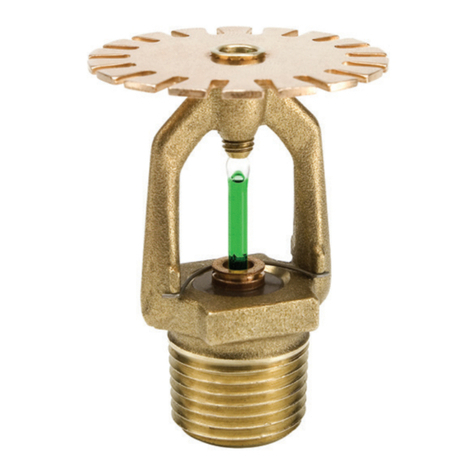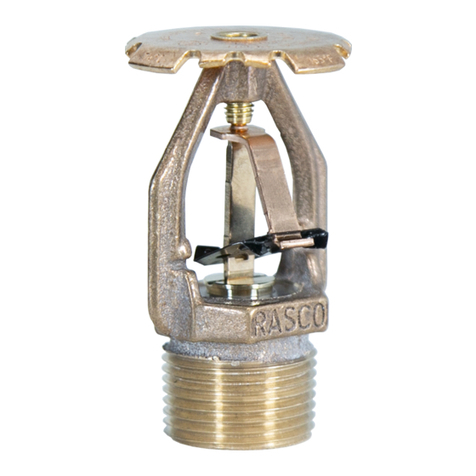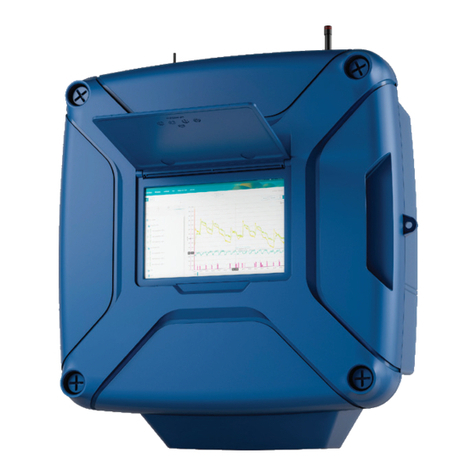
3.
Design Criteria for UL and C-UL
The Models N252 EC Pendent and Recessed Pendent
Sprinklers are cULus Listed standard response control-
mode, extended coverage density/area sprinklers for
installation in accordance with the extended coverage
pendent spray sprinkler criteria of NFPA 13, or other ap-
plicable NFPA standards, when used in combination with
the following guidelines:
• Protection for extra hazard and high-piled stor-
age occupancies using NFPA 13 density/area
criteria.
• Suitable for use in wet pipe systems, and in dry-
pipe and preaction systems as specifically al-
lowed for pendent sprinklers in NFPA 13.
• cULus Listed for “unobstructed” or non-combus-
tible “obstructed” construction. Given that the
Model N252 EC sprinklers are specifically listed
for noncombustible obstructed construction, they
may be installed within trusses or bar joists hav-
ing noncombustible web members greater than
1 inch (25.4 mm) when applying the “Four Times
Rule” as defined in NFPA 13 under “Obstructions
to Sprinkler Discharge Pattern Development.”
• Maximum area of coverage per sprinklers is 196
ft2(18.2 m2); minimum area of coverage is 100 ft2
(9.3 m2). Maximum spacing between sprinklers
is 14 ft (4.3 m); minimum spacing between sprin-
klers is 10 ft (3.1 m).
• Minimum flow requirement is based on the de-
sign density applied over the actual area of cov-
erage per sprinkler. Example 1, a design density
of 0.43 gpm/ft2(17.5 mm/min) applied over 14 ft
x 14 ft (4.3 m x 4.3 m) spacing, or 196 ft2(18.2
m2), would require a minimum sprinkler design
flow rate and pressure of 84.3 gpm (319.2 L/min)
at 11.2 psi (0.77 bar). Example 2, a design den-
sity of 0.43 gpm/ft2(17.5 mm/min) applied over
14 ft x 12 ft (4.3 m x 3.7 m) spacing, or 168 ft2
(15.6 m2), would require a minimum sprinkler de-
sign flow rate and pressure of 72.2 gpm (273.3
L/min) at 8.2 psi (0.57 bar).
• Maximum working pressure - 175 psi (12.1 bar).
• Minimum end head pressure - 7 psi (0.5 bar).
Technical Data
Sprinkler
Model Type
Temperature
Rating
Maximum
Ambient
Ceiling Temp.
Nominal K-
Factor
GPM/psi
(LPM/bar)½
Orifice
Size
Thread
Size
Sprinkler Ht.
Inch (mm)
Sprinkler
Identification
Number (SIN)
°F °C °F °C
N252 EC
Pendent/
Recessed
Pendent
165 74 100 38 25.2
(363) 1 inch 1” NPT
(R1)
3.6
(91,5) RA0842
212 100 150 66
• The minimum clearance between the deflec-
tor and the top of storage is 3 ft. (0,92m). For
clearances of 3 ft. (0,92m) up to 4 ft. (1,21m), the
minimum design pressure is 22 psi (1,52 bar).
For clearances of 4 ft. (1,21m) and greater, the
minimum design pressure is established by the
minimum flow requirement (however, the pres-
sure can never be less than 7 psi (0,48 bar)).
• Available temperature ratings are Ordinary, 165
°F (74 °C) and Intermediate, 212 °F (100 °C).
Selection of temperature rating is based on the
expected maximum ambient temperature expo-
sure, or in accordance with the high-piled stor-
age density/area curve requirements specified
in Chapter 12 of the 2002 edition of NFPA 13. In
accordance with the listing of the sprinkler, the
density curves normally associated with high
temperature rated sprinklers [286°F (141°C)] may
be used with either the ordinary or intermediate
temperature rating of the N252 EC sprinklers.
• The obstruction criteria in NFPA 13 for Extend-
ed Coverage Pendent Sprinklers shall be used
for the locating and positioning Model N252 EC
sprinklers relative to obstructions.
Design Criteria for FM
The Model N252 EC Pendent Sprinklers are FM approved to
be utilized in accordance with the following guidelines:
• FM approved for installations governed by data
sheets 2-0 and 8-9.
• FM Global considers this a “Quick Response”
extended coverage storage sprinkler.
Maintenance
The Models N252 EC Pendent and Recessed Pendent
Sprinklers should be inspected and the sprinkler system main-
tained in accordance with NFPA 25, and local jurisdictional
requirements. Do not clean sprinklers with soap and water,
ammonia, or any other cleaning fluids or solvents. Remove
dust by using a soft brush or gentle vacuuming. Remove any
sprinkler that has been painted (other than factory-applied) or
otherwise altered after leaving the factory. A stock of spare
sprinklers should be maintained to allow quick replacement
of damaged or operated sprinklers. Prior to installation, sprin-
klers should be maintained in the original cartons and packag-
ing until used to minimize the potential for damage to sprinkler
that would cause improper operation or non-operation.

